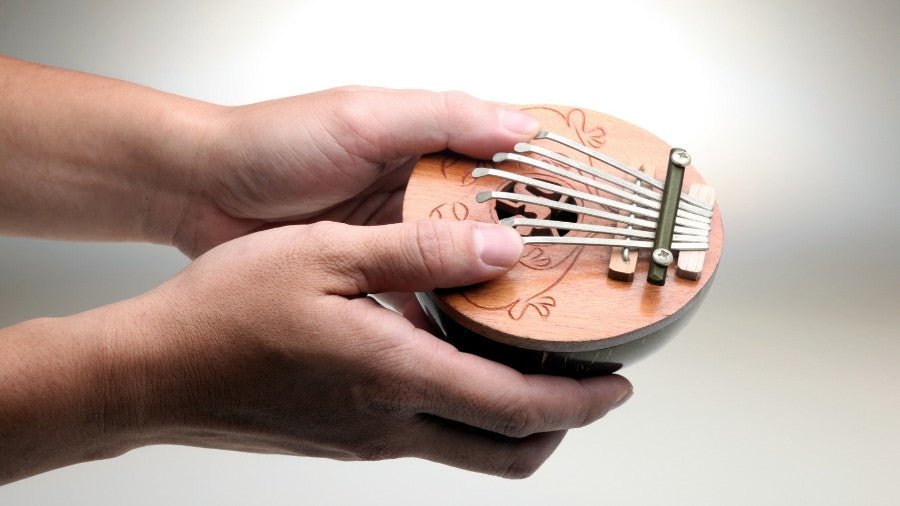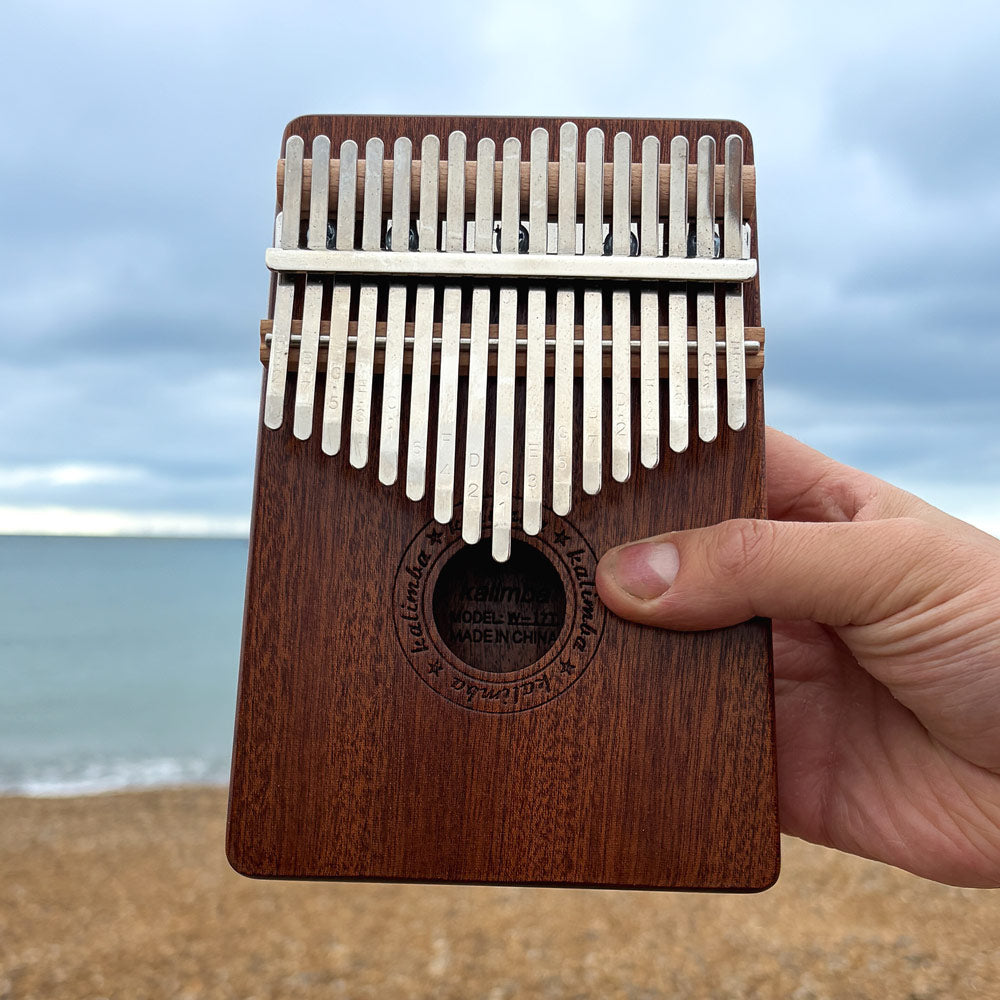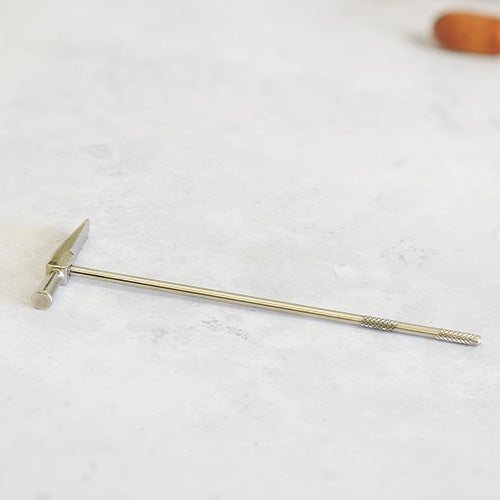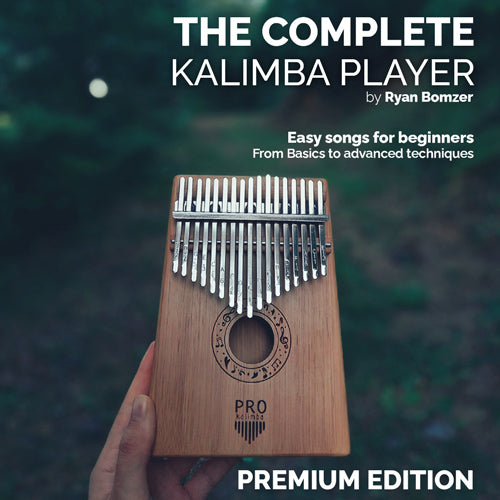In this tutorial, we'll explore the coconut thumb piano, or Kalimba, a traditional African instrument known for its soothing tones. The coconut thumb piano is made from a hollowed-out coconut shell as the resonating chamber and metal tines that produce its unique sound. If you are interested in knowing how to choose the right coconut thumb piano for you, it's worth considering its size, shape, and thickness to ensure optimal tone and playability.
Tuning Your Coconut Thumb Piano
To tune your coconut thumb piano you will need a phone app that can show you what the note is currently tuned to and a tuning hammer so that you can manually make adjustments to the note moving it back and forth to get it sounding in tune. There are many different ways to tune the instrument in terms of which tine produces which note but we recommend starting with the tines on the left and work towards the right.
Some people prefer to adjust the notes by hand but others may prefer using a dedicated kalimba tuning tool for more precision. If doing it by hand, it can make your fingers sore. Make small adjustments to ensure each tine reaches the desired pitch. Regular cleaning, storage, and occasional checks will help maintain its performance and will ensure that it keeps the tuning for longer.
Basic Playing Techniques for the Coconut Thumb Piano
To play the coconut thumb piano you will want to hold the instrument steady with both hands then position your thumbs comfortably on the metal tines. Use the nails of your thumbs to pluck the tines starting on the lower notes and moving left or right to the higher pitches notes. Pluck each tine to produce a clear tone then when you are comfortable start experimenting with rhythm, timing and different orders to produce different melodies.
Popular Songs to Play on the Coconut Thumb Piano
Any song you can play on the kalimba can usually be played on the coconut thumb piano too, though there’s a slight limitation due to fewer notes. Coconut thumb pianos typically have 7 to 9 tines, giving you around one octave to play with. Songs needing higher or lower pitches may need transposing and might not sound quite the same. Nursery rhymes are a great starting point.
We offer sheet music separately, or you can grab our kalimba songbook with over 35 melodies—great value for money. Some great songs we would recommend include: Twinkle Twinkle Little Star, Somewhere Over the Rainbow, Can’t Help Falling in Love, My Heart Will Go On, Let It Be, Hallelujah, A Thousand Years, Happy Birthday.
Kalimba vs Coconut Thumb Piano - Differences
Both instruments are very similar and belong to the lamellaphone family, the kalimba usually has more notes and features a wooden body, whereas the coconut thumb piano uses a hollowed-out coconut shell. The kalimba usually comes in two types; board type which is flat and box type which is hollow inside to amplify the sound. The coconut thumb piano is a box type as it is hollow inside and has a resonating chamber.
Take your kalimba skills to the next level!
The Complete Kalimba Player eBook will provides you with everything you need to master the kalimba. The 62-page resource has tuning guides, image diagrams, advanced tips, and more than 35 songs that are suitable for beginners. Save time by getting this all-in-one guide. This is the only kalimba guide you'll ever need. Get instant access to our large library of songs.
Was £10, now £5—offer ends soon, get yours now and start your kalimba journey today!





